Plastic Manufacturing: 12 Techniques to Form Plastic Parts
In our daily lives, plastic is everywhere, and different plastic products are created using a variety of plastic manufacturing processes. Plastic manufacturing entails converting it into completed items or semi-finished commodities that have practical uses. This includes both the first and subsequent phases of plastic manufacturing. Using the services of a plastic manufacturing company can be a beneficial solution when a new product is being developed or is in the early stages of low-volume production. It provides manufacturing solutions without the need for substantial tooling expenditures and the ensuing protracted lead times.
At Sungplastic, you can arrange your plastic manufacturing projects with our plastic molding solutions.
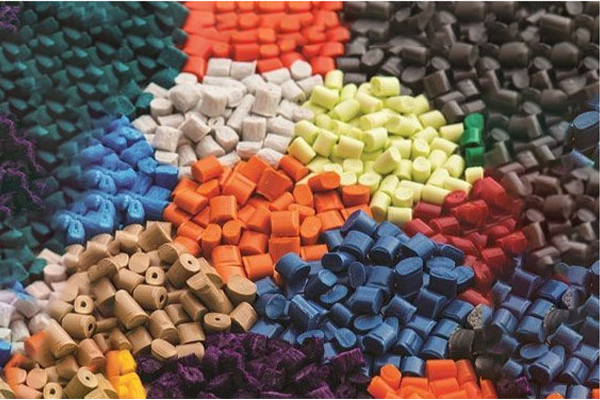
Plastic Injection Molding
Plastic injection molding stands as a high-volume plastic manufacturing technique. In this plastic manufacturing process, a liquid plastic resin is injected into an empty cavity within a forming die, adopting the shape of the inner surface. After the resin cools and solidifies, the forming die opens, ejecting the finished part, and the cycle repeats.
Plastic injection molding has proven its reliability and stability in high-volume production, accounting for over 80% of the everyday plastic items we encounter.
Pros and cons:
The advantage of plastic injection molding is its ability to produce millions of identical parts rapidly, boasting an excellent surface finish, all at a low cost. However, molds can be expensive and intricate, particularly depending on the part’s geometry. Meticulous engineering design of the mold is necessary to prevent defects and optimize part quality and processing speed.
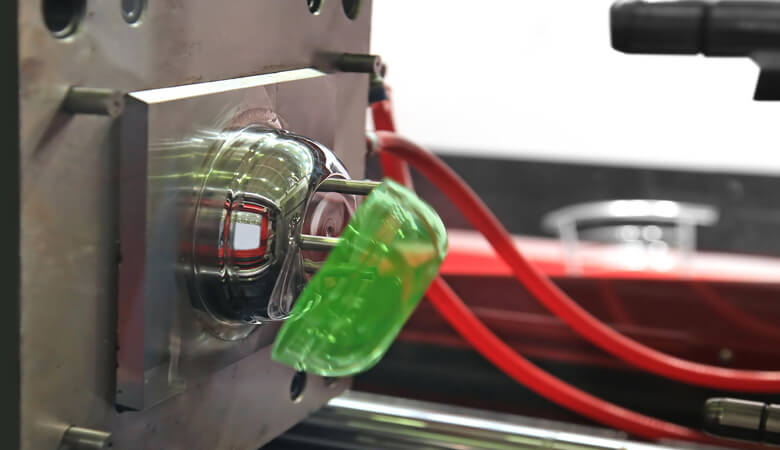
CNC Machining
CNC machining (Computer Numerical Control Machining) involves the use of computer-controlled machines to precisely remove material from a plastic block or sheet to create the desired shape. It is a subtractive plastic manufacturing process.
Pros:
High precision and accuracy.
Suitable for producing complex and custom shapes.
Good surface finish.
Can work with various plastics.
Cons:
Not cost-effective for high-volume production.
Material waste during the machining process.
Slower compared to some other manufacturing methods.
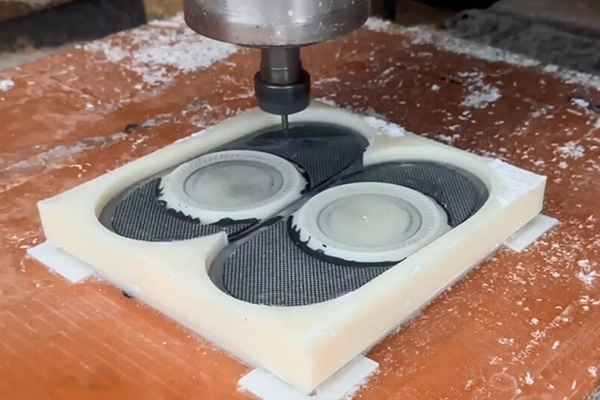
3D Printing (Additive Manufacturing)
3D printing is an additive plastic manufacturing process where plastic material is deposited layer by layer to build up a three-dimensional object based on a digital 3D model.
Pros:
Excellent for rapid prototyping and customization.
Can produce complex geometries that are difficult with other methods.
Minimal material waste.
Suitable for low to moderate production runs.
Cons:
Limited in terms of material choices compared to traditional methods.
Typically slower than some other manufacturing techniques.
Surface finish may require post-processing.
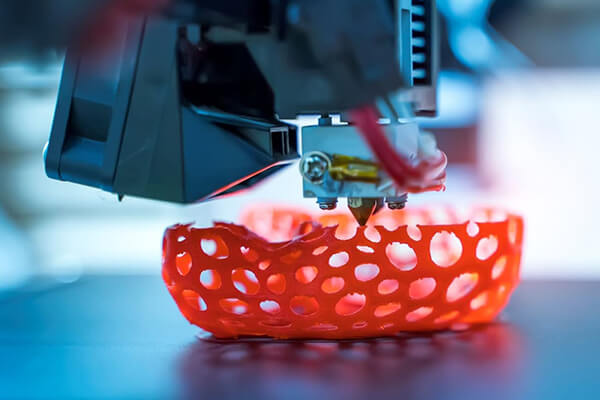
Rotational (Roto) Molding
Rotational molding also utilizes a mold tool composed of a core side and a cavity side. Nevertheless, the plastic manufacturing process differs significantly from injection molding.
Initially, plastic powder is poured into the mold’s cavity, and the mold is then placed in an oven. As it is heated, the mold is slowly rotated along two axes. Gravity assists in adhering the plastic to the tool walls, gradually building up the desired thickness.
Ultimately, the mold is extracted from the oven and allowed to cool gradually to prevent warping. Full cooling may take several minutes, after which the tool is opened, and the part is removed for the next cycle.
Pros and cons:
Rotational molding is particularly suitable for crafting large, hollow, or concave shapes, often intended for outdoor applications such as canoes, tubs, or water storage tanks.
The finished parts are devoid of stress and seams, rendering them robust, and the tools are relatively straightforward and cost-effective to produce. However, the downside is that tools have a limited lifespan, lasting only a few thousand cycles before replacement is necessary. Additionally, the part finish quality is typically average, making it unsuitable for precision forming.
Extrusion Blow Molding
Extrusion blow molding involves the use of molten plastic, shaped into a large droplet known as a “parison,” which is introduced into a two-piece clamshell mold. Once the mold closes, the parison is expanded, akin to inflating a balloon, until it fully occupies the empty cavity. As the mold’s walls are water-cooled, the plastic rapidly solidifies, allowing for the ejection of the finished part.
Pros and cons:
This plastic manufacturing method is the prevalent choice for crafting thin-walled, cost-effective containers, such as disposable drinking cups or bottles. It offers speed in production, and the tooling is relatively straightforward to create. However, it’s worth noting that this plastic manufacturing process is not well-suited for producing complex or highly precise parts.
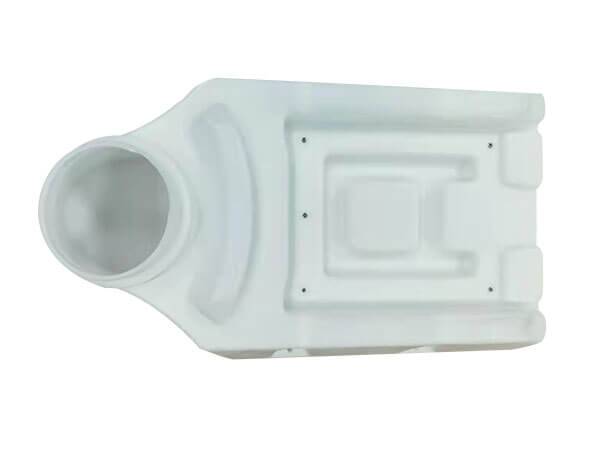
Injection Blow Molding
In injection blow molding, molten resin is forced into a mold cavity using gas pressure.
Pros and cons:
This plastic manufacturing process offers precise control and repeatability, making it a common choice for manufacturing transparent plastic drinking bottles. It results in excellent surface quality, although it may not be the best option for producing thin-walled items.
Typically, PET (polyethylene terephthalate) or PEEK (polyether-ether-ketone) resins are preferred for making drinking bottles due to their clarity, durability, and safety for consumables. These materials are also easily recyclable.
Reaction Injection Molding (RIM)
Reaction Injection Molding (RIM) finds its primary application in the automotive industry, where it produces lightweight components with a rigid outer shell. This outer shell can be easily painted, making it suitable for manufacturing body panels, dashboards, and other automotive parts. However, RIM doesn’t work with thermoforming plastics; it requires the use of thermosetting plastics.
Thermosetting plastics undergo an irreversible chemical reaction within the mold. Typically, this reaction causes them to expand, filling the mold cavity. Once the chemical reaction is complete, the plastic solidifies into its final form.
Pros and cons:
Prototyping tooling costs are relatively low, while production tooling can be moderately expensive. The primary cost lies in the material, as the resulting part typically requires finishing, often involving a urethane-based gel coat or painting. Consequently, the process is more labor-intensive, leading to higher piece prices.
Vacuum Casting
Vacuum casting is an excellent choice for producing a small quantity of high-quality rapid prototypes without the need for significant investments in tools or materials.
A master model, often a rigid solid (such as a 3D printed master pattern), is placed within a sealed container. This container is then filled with flexible urethane or silicone. Once the master model is removed, it leaves behind a cavity inside the mold, which can be filled with plastic resin to create a replica of the original. Vacuum pressure is employed to remove air from the mold, ensuring complete filling without air bubbles.
In this plastic manufacturing process, surface finish quality and detail are outstanding, and pourable resins can replicate various engineering grades of plastic. It’s important to note that the pourable liquid resins differ from those used in plastic injection molding. In vacuum casting, resins solidify through a chemical reaction with a hardening agent, not through cooling.
Pros and cons:
Polyurethane vacuum casting is a swift process since a silicone mold tool can be created in just a few days. It requires a smaller initial investment, and the replicated copies exhibit excellent fidelity, even capturing fine textures. However, the drawback is that the mold tools are fragile and react with the chemicals in the resin, necessitating replacement after approximately 20 copies or so.
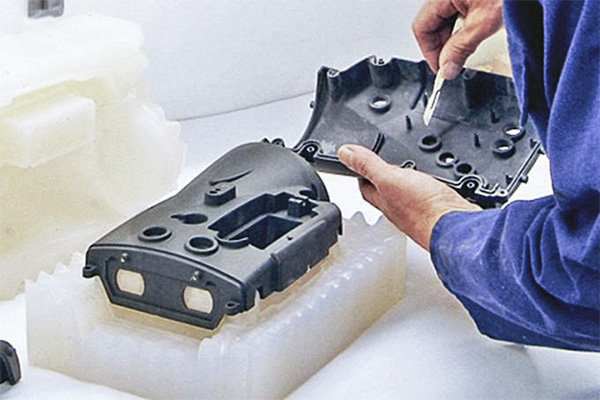
Thermoforming
Thermoforming is a variant of vacuum forming in which a plastic sheet, whether thin or thick gauge, is placed over a mold. The plastic is heated to a temperature that makes it pliable, and then it’s stretched over the mold’s surface while vacuum pressure draws the sheet down, shaping it into its final form. This process can be executed with simple dies and basic equipment, making it suitable for creating prototypes and samples of thin-walled, hollow-bodied parts.
In industrial applications, thermoforming is used for producing items like plastic cups, lids, boxes, clamshell packaging, and even auto body parts made from thicker gauge material. Thermoforming plastics, as opposed to thermosets, are used because they soften under heat and then regain rigidity upon cooling.
Pros and cons:
Thermoforming is a cost-effective process that can be accomplished with straightforward equipment. It’s accessible even to hobbyists and DIY enthusiasts for making models and prototypes. Safety is also a plus, as it involves neither hazardous chemicals nor high temperatures.
However, thermoforming is best suited for creating simple shapes, and the material tends to shrink significantly upon cooling, making it less suitable for high-precision applications. Additionally, relatively thin plastic stock is required, though multiple sheets can be laminated together after forming to create a more rigid final product.
Compression Molding
Compression molding involves pre-heating a raw material, typically an elastomer or polyurethane, and placing it inside the open cavity of a die. A cap or plug is then used to seal the die and apply heat and pressure, causing the plastic to cure. This process is well-suited for manufacturing soft, pliable, thin-walled parts such as rubber keypad switches, gaskets, and O-rings.
Pros and cons:
Compression molding is a relatively cost-effective method that minimizes material waste. However, maintaining consistency in the finished piece can be challenging, necessitating careful consideration in the initial mold design. Creating a compression molding die is simpler and less expensive than producing a plastic injection mold tool, and the process can be executed using relatively uncomplicated equipment for plastic manufacturing.
Thermoplastic Welding
Thermoplastic welding involves joining plastic components by melting their surfaces and fusing them together. Common methods include ultrasonic welding, hot plate welding, and solvent bonding.
Pros:
Effective for joining plastic parts with high strength.
No additional materials required.
Suitable for a wide range of thermoplastics.
Cons:
Limited to joining thermoplastics.
Equipment and tooling costs can be significant.
May leave visible seams or marks on the surface.
Calendering
Calendering is a process used to produce continuous sheets or films of plastic by passing the material through a series of rollers that compress and flatten it to the desired thickness and surface finish.
Pros:
Excellent for creating consistent and smooth plastic sheets.
Suitable for various thermoplastics.
Can produce materials with specific textures or patterns.
Cons:
Limited to flat and continuous sheets.
Not suitable for complex or three-dimensional shapes.
Equipment can be expensive.
Which Materials Are Utilized in Plastic Manufacturing?
In the realm of plastic manufacturing, a staggering array of over 10,000 distinct plastic resins is commercially accessible. Each of these resins is meticulously engineered to bestow precise chemical and mechanical attributes.
While an exhaustive catalog would be impractical, there exist ten primary categories that encompass the majority of industrial and consumer products. These categories include Polyamide, Acrylic, Polycarbonate, POM (Polyoxymethylene), Polystyrene, ABS (Acrylonitrile Butadiene Styrene), Polypropylene, Polyethylene, Polyurethane, and Thermoplastic Rubber.
Additionally, plastic manufacturers have the capacity to augment materials by incorporating glass or carbon fibers to enhance strength and rigidity. They can also engage in the practice of blending two or more resins together to amalgamate their distinct properties. This spectrum of plastic types provides a comprehensive range of advantages, spanning attributes such as strength, impact resistance, flexibility, chemical resistance, lightweight properties, toughness, and optical clarity.
Sungplastic’s Plastic Manufacturing Solutions
Our plastic manufacturing solutions include:
plastic injection molding
CNC machining
3D printing
Over molding and insert molding
Injection molds fabrication
Prototype design to production
Large part production
Batch manufacturing
If your plastic manufacturing projects need the above services, please contact us directly.
Get a free quote and design analysis today.
We’ll reply to you within 6 working hours.
We respect your privacy.
+86 139 2927 4777 (WhatsApp, Wechat)
